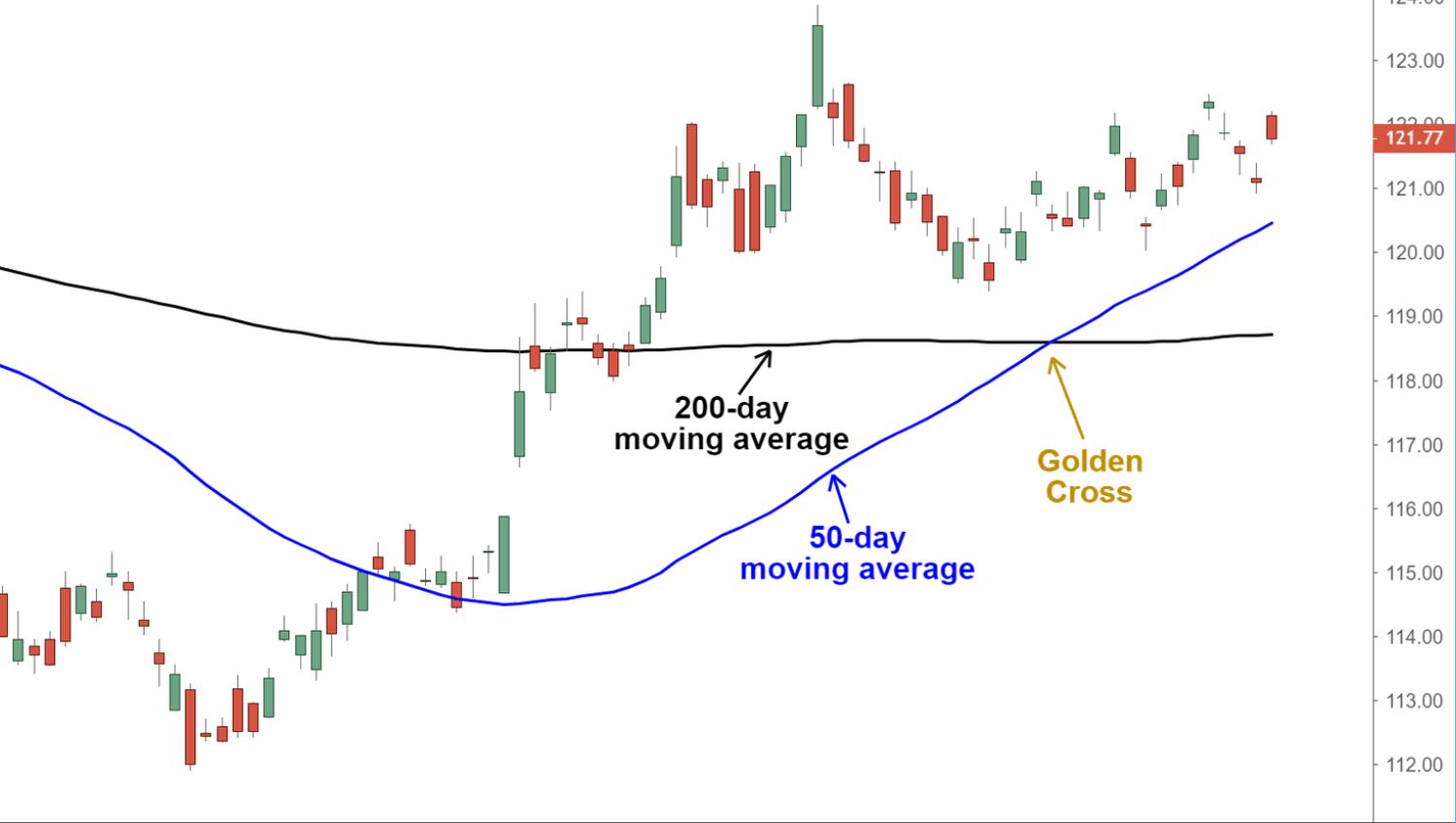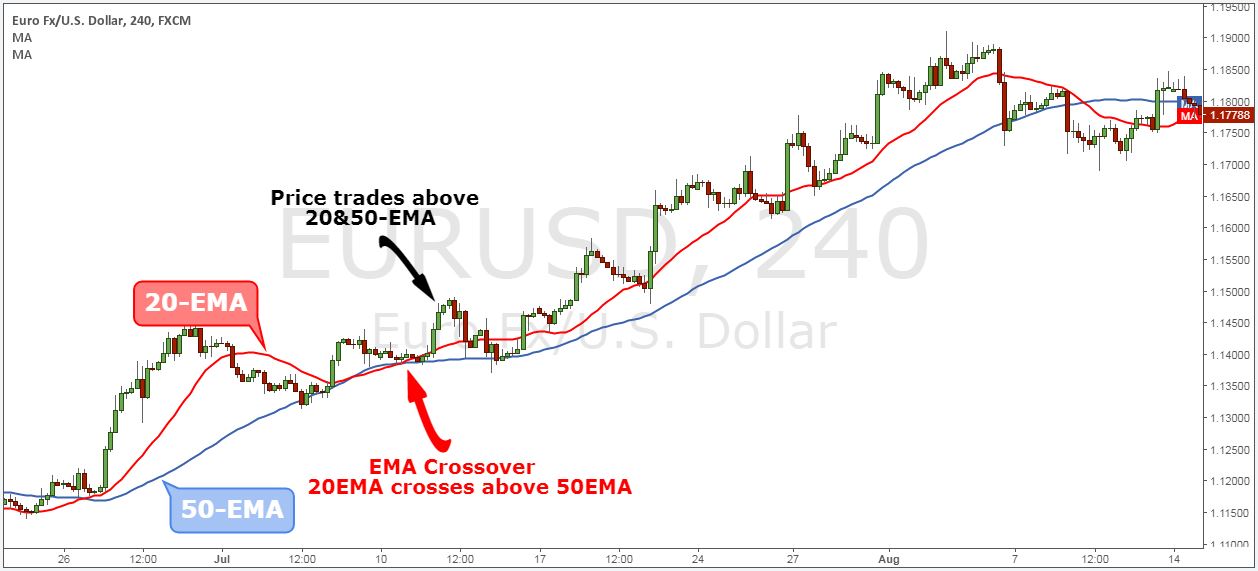Introduction
Welcome to the exciting world of day trading! If you’re looking to make a living from the fast-paced world of buying and selling stocks, currencies, or other financial instruments, day trading offers a thrilling opportunity. However, it is important to approach day trading with caution and a solid understanding of its risks and rewards.
In this comprehensive guide, we will walk you through the essential steps to start your day trading journey. From setting up your workspace to analyzing charts and managing your capital, we will cover all the key aspects that can help you become a successful day trader.
It’s important to note that day trading is not a get-rich-quick scheme. It requires dedication, discipline, and continuous learning. While there is potential for substantial profits, there is also a risk of significant losses. Therefore, it is crucial to approach day trading with a realistic mindset and a willingness to put in the necessary time and effort.
Before diving in, it’s essential to understand that day trading is not suitable for everyone. It requires a certain level of financial stability, emotional control, and a tolerance for risk. It’s important to assess your own financial situation, risk appetite, and personal preferences before deciding if day trading is the right path for you.
Throughout this guide, we will provide you with essential knowledge and strategies to help you navigate the day trading landscape. We will cover everything from setting up your trading workstation and selecting the right brokerage account to developing trading plans and managing your capital.
Remember, day trading is a skill that takes time to develop. It requires a combination of market knowledge, technical analysis, emotional control, and risk management. By following the steps outlined in this guide and committing to continuous learning, you can increase your chances of success in the world of day trading.
Section 1: Getting Started with Day Trading
Before diving into the world of day trading, it’s important to understand the basics and lay a strong foundation for your trading journey. Here are some key steps to get started:
Educate Yourself: Day trading requires a solid understanding of financial markets, trading strategies, and risk management. Take the time to educate yourself by reading books, attending seminars or webinars, and following reputable financial news sources. Familiarize yourself with concepts such as technical analysis, fundamental analysis, and market indicators.
Choose Your Trading Market: Decide which financial market you want to trade in – stocks, currencies, commodities, or options. Each market has its own characteristics, trading hours, and risks. Research different markets and choose one that aligns with your interests and goals.
Define Your Trading Capital: Determine how much money you are willing to invest in day trading. This should be an amount that you can afford to lose without causing financial hardship. Remember, day trading involves risks, and it’s important to separate your trading capital from your living expenses.
Select a Reliable Broker: Choose a reputable brokerage firm that offers a user-friendly trading platform, competitive fees, and reliable customer support. Look for brokers that are regulated by respected financial authorities and have a good track record in the industry.
Practice with Simulated Trading: Before risking real money, consider practicing with simulated or virtual trading accounts. These accounts allow you to trade using virtual money, giving you an opportunity to test different strategies and get comfortable with the trading platform without any financial risks.
Develop a Trading Plan: A trading plan outlines your trading goals, strategies, risk tolerance, and money management rules. It acts as your roadmap and helps you make informed trading decisions. A well-defined trading plan can increase your chances of success and prevent impulsive and emotional trading.
Establish Realistic Expectations: It’s important to have realistic expectations when starting out in day trading. Understand that consistent profits take time and effort to achieve. Avoid get-rich-quick mindset and focus on continuous learning, improving your skills, and staying disciplined.
Remember, getting started with day trading is just the first step. It’s a journey of continuous learning and improvement. In the next sections, we will delve deeper into each aspect of day trading, providing you with the knowledge and strategies to help you succeed in this exciting, yet challenging, endeavor.
Section 2: Setting Up Your Day Trading Workspace
Creating the right workspace is crucial for day traders. An organized and efficient trading setup can help you stay focused, make quick decisions, and execute trades seamlessly. Here are some key factors to consider when setting up your day trading workspace:
Choose a Suitable Location: Find a quiet and dedicated space where you can focus on your day trading activities without distractions. Select a location with good lighting, proper ventilation, and a comfortable chair to support long hours of sitting.
Invest in a Reliable Computer: A fast and reliable computer is essential for day trading. Invest in a computer with sufficient processing power, RAM, and storage capacity. Consider using multiple monitors to have a larger workspace, allowing you to monitor multiple charts and platforms simultaneously.
Setup High-Speed Internet Connection: A stable and high-speed internet connection is a must for day traders. Slow internet speeds can lead to missed opportunities and delays in executing trades. Consider investing in a wired connection for a more stable connection than Wi-Fi.
Choose the Right Trading Software: Select a trading platform or software that offers the features and functionality you need for day trading. Look for platforms that provide real-time market data, customizable charts, and order execution capabilities. Popular trading platforms include MetaTrader, ThinkorSwim, and Interactive Brokers.
Stay Organized with Ergonomic Accessories: Utilize ergonomic accessories such as an ergonomic keyboard, mouse, and wrist support to reduce the risk of repetitive strain injuries. Keep your workspace organized with cable management solutions to avoid clutter and distractions.
Setup Backup and Security Measures: Ensure you have a backup system in place to protect your trading data and important files. Consider using cloud storage or external hard drives for regular backups. Implement strong security measures, such as antivirus software and firewalls, to protect your computer from cyber threats.
Establish Effective Communication Channels: Set up efficient communication channels to stay connected with your broker, fellow traders, and trading community. This can include email, instant messaging platforms, or trading forums. Engaging with others can provide valuable insights, knowledge sharing, and support.
Eliminate Distractions: Minimize distractions in your trading workspace to maintain focus and concentration. Turn off notifications on your phone or other devices, and avoid browsing unrelated websites during trading hours. Create a dedicated space free from personal items or distractions that could impact your decision-making process.
Maintain a Clean and Clutter-Free Workspace: A clean and clutter-free workspace can help reduce stress and promote productivity. Organize your trading tools, charts, and documents in a logical and accessible manner. Keep your desk clean and free from unnecessary clutter.
Remember, creating an effective day trading workspace is a personal process. Experiment with different setups and configurations to find what works best for you. A well-organized and efficient workspace plays a significant role in your overall trading success.
Section 3: Choosing the Right Brokerage Account
When it comes to day trading, selecting the right brokerage account is a crucial decision. Your brokerage account serves as a gateway to the financial markets, allowing you to execute trades and manage your investments. Here are some key considerations for choosing the right brokerage account:
Regulation and Reputation: Ensure that the brokerage firm you choose is regulated by a reputable financial authority. Regulatory bodies monitor and enforce rules and regulations to protect investors. Research the broker’s reputation and read reviews to gauge their reliability and customer satisfaction.
Trading Platform: Evaluate the trading platform offered by the brokerage. Look for a platform that is user-friendly, intuitive, and provides advanced features such as real-time market data, charting tools, and order execution capabilities. Test the platform’s speed and reliability to ensure smooth trading experiences.
Accessibility and Availability: Consider the accessibility and availability of the brokerage platform. Ensure it has desktop, web, and mobile versions, allowing you to trade on various devices, regardless of your location. Accessibility to the platform is crucial for active day traders who need to monitor their positions and make quick trading decisions on the go.
Range of Markets: Assess the range of financial markets available for trading on the brokerage platform. Some day traders focus on specific markets such as stocks, while others prefer to diversify their trading portfolio by including options, futures, or forex. Choose a brokerage that offers a wide range of instruments to cater to your trading preferences.
Commissions and Fees: Analyze the commission structure and fees associated with the brokerage account. Look for transparent and competitive pricing. Some brokers may offer lower commissions but impose additional fees, so read the fine print carefully. Consider how the fees might impact your trading profits, especially if you plan to execute multiple trades frequently.
Customer Support: Evaluate the customer support services provided by the brokerage. Fast and efficient customer support is crucial in case you encounter technical issues or have questions about your account. Explore the available communication channels, such as phone, email, or live chat, and assess their responsiveness and helpfulness.
Research and Analysis Tools: Consider the research and analysis tools provided by the brokerage. Look for platforms that offer real-time market news, economic calendars, technical analysis tools, and fundamental research. These resources can help you make informed trading decisions and stay updated with market trends.
Education and Learning Resources: Assess the educational resources and learning materials offered by the brokerage. Look for educational webinars, tutorials, eBooks, and trading courses that can help you enhance your trading knowledge and skills. A broker that invests in its clients’ education shows a commitment to their success.
Account Types: Explore the different types of accounts offered by the broker. Some brokers may provide individual or joint accounts, as well as specialized accounts for day traders, such as margin accounts or pattern day trading accounts. Consider your trading goals and financial situation to determine the most suitable account type.
Take your time to research and compare different brokerage options. Every trader’s needs and preferences are unique, so choose a brokerage account that aligns with your trading style, goals, and financial circumstances. Your brokerage account is an essential component of your day trading journey and can significantly impact your overall trading experience.
Section 4: Understanding Day Trading Strategies
Successful day trading requires a solid understanding of different trading strategies. Having a well-defined strategy can help you make informed decisions, mitigate risks, and maximize profit potential. Here are some popular day trading strategies:
Scalping: Scalping is a high-frequency trading strategy where traders aim to take advantage of small price movements throughout the day. Scalpers enter and exit trades quickly, often within minutes, targeting small profits on each trade. This strategy requires quick decision-making and a focus on liquid markets with low spreads.
Momentum Trading: Momentum traders focus on stocks or other assets that are experiencing significant price movements. They aim to capture profits as the price continues to move in the same direction. This strategy relies on technical analysis indicators such as moving averages and volume to identify momentum and enter trades accordingly.
Breakout Trading: Breakout traders look for patterns where the price breaks through significant support or resistance levels, signaling a potential trend continuation or reversal. They enter trades when the price breaks out of these established levels, aiming to profit from the subsequent price movements.
Reversal Trading: Reversal traders anticipate price reversals in overbought or oversold market conditions. They look for signs of exhaustion in the prevailing trend and enter trades in the opposite direction. Reversal trading requires careful analysis of key support and resistance levels, as well as the use of technical indicators like the Relative Strength Index (RSI) or Stochastic Oscillator.
Range Trading: Range traders focus on market consolidation phases, where the price moves within a defined range between support and resistance levels. They enter trades near support and sell near resistance, profiting from the price bouncing back and forth within the range.
News Trading: News traders capitalize on market volatility caused by significant news events, economic releases, or corporate announcements. They analyze the impact of news on market sentiment and enter trades based on their expectations of how the news will affect the price of a particular asset.
Pattern Trading: Pattern traders look for repetitive patterns in price charts, such as triangles, flags, or head and shoulders. They analyze these patterns to predict future price movements and enter trades with the expectation that the pattern will continue or reverse. Pattern trading requires patience and a deep understanding of chart patterns.
It’s important to note that no trading strategy guarantees profit, and each strategy has its pros and cons. It’s crucial to backtest and practice different strategies using historical data or paper trading before applying them with real money. Additionally, traders often combine multiple strategies or adjust them to suit their trading style and risk appetite.
Remember, the key to successful day trading is not just adopting a strategy, but also understanding market dynamics, managing risk, and maintaining discipline in executing your trades. Continuously educate yourself, adapt your strategies to changing market conditions, and practice good risk management techniques to increase your chances of success in day trading.
Section 5: Establishing Risk Management Techniques
Effective risk management is a critical component of successful day trading. It helps protect your trading capital, minimize potential losses, and preserve your long-term profitability. Here are some essential risk management techniques to consider:
Set a Risk Limit: Determine the maximum amount you are willing to risk on each trade. This can be a percentage of your trading capital or a fixed dollar amount. Setting a risk limit ensures that you don’t expose yourself to excessive losses on any single trade.
Use a Stop Loss: Implement a stop loss order on every trade to protect against significant losses. A stop loss is a predetermined price level at which you exit the trade to limit your downside risk. Place your stop loss at a level that makes sense based on your analysis, allowing for a reasonable amount of price fluctuation.
Apply Position Sizing: Determine the appropriate position size for each trade based on your risk tolerance and account size. Position sizing ensures that you allocate an appropriate portion of your capital to each trade, considering the potential risk and reward ratio. Avoid overexposing yourself to a single trade by risking too much of your capital.
Implement Take Profit Targets: Define take profit levels to secure profits and capitalize on favorable price movements. A take profit order automatically closes your trade when the price reaches a predetermined level, allowing you to lock in gains. Setting realistic profit targets helps you manage your emotions and avoid greed-driven trading decisions.
Diversify Your Trades: Avoid concentrating all your trades in a single market or asset. Diversify your trading portfolio to spread your risk across different markets, industries, or asset classes. This can help reduce the impact of a single trade or market moving against you.
Manage Leverage and Margin: If you trade on margin, be cautious with leverage and understand its implications. Leverage can amplify both profits and losses. Be aware of margin requirements and ensure you have sufficient funds to cover potential losses and margin calls.
Use Proper Risk-Reward Ratios: Assess the potential reward relative to the risk of each trade. Aim for a favorable risk-reward ratio, where the potential reward outweighs the potential risk. This ensures that even if you have a winning trade, the profits can offset multiple losing trades.
Stay Disciplined and Stick to Your Plan: Emotions can cloud judgment and lead to impulsive trading decisions. Establish a trading plan with clear risk management rules and follow it consistently. Avoid chasing losses or deviating from your plan due to fear or FOMO (fear of missing out).
Regularly Review and Evaluate Your Risk Management: Monitor and evaluate your risk management strategies regularly. Assess the effectiveness of your risk management techniques and make adjustments as needed. Trading is dynamic, and market conditions can change, so stay proactive in managing your risk.
Remember, risk management is an ongoing process and is just as important as having a profitable trading strategy. By implementing proper risk management techniques, you can protect your capital, minimize losses, and improve your overall trading performance.
Section 6: Developing a Day Trading Plan
A well-defined day trading plan lays the foundation for successful and disciplined trading. It serves as a roadmap, guiding your trading decisions and actions. Here are key steps for developing a day trading plan:
Determine Your Trading Goals: Define your short-term and long-term trading goals. Are you looking to generate consistent daily income or aiming for long-term wealth accumulation? Clearly understanding your goals will help shape your trading strategy and risk tolerance.
Set Realistic Expectations: Establish realistic expectations for your day trading activities. While profits are certainly possible, it is important to approach day trading with a realistic mindset. Understand that consistent profits take time to achieve, and losses are a part of the learning process.
Define Your Trading Style: Determine your preferred trading style based on your personality, risk appetite, and available time. Do you prefer short-term scalping or longer-term swing trading? Identify the timeframes and markets that suit your trading style and align with your goals.
Select Your Trading Instruments: Identify the financial instruments you will focus on for day trading. Whether it’s stocks, currencies, commodities, or options, choose the markets that you have expertise in and are comfortable trading. Specializing in a few instruments can help you become more proficient in analyzing and trading them.
Develop Entry and Exit Strategies: Define your entry and exit strategies for trade initiation and completion. Outline specific technical indicators, chart patterns, or fundamental factors that will trigger your entry. Determine your profit targets and stop loss levels to ensure consistent risk management.
Establish Risk Management Rules: Detail your risk management strategies, including position sizing, stop loss placement, and the maximum acceptable risk per trade. Incorporate proper risk-reward ratios in your plan to balance potential profit and potential loss.
Specify Trading Timeframes and Hours: Determine the trading timeframes and hours that align with your strategy and trading style. Day traders may focus on intraday charts and take advantage of short-term price movements. Consider the active hours of your chosen market to capitalize on liquidity and volatility.
Track and Analyze Trades: Implement a system to track and analyze your trades. Record entry and exit points, trade duration, profit/loss, and any relevant notes. Regularly review and analyze your trades to identify patterns, strengths, and areas for improvement.
Practice Proper Money Management: Establish guidelines for allocating your trading capital, risking a certain percentage per trade, and withdrawing profits. Money management is vital to protect your capital and sustain your trading activities in the long run.
Continuously Educate Yourself: Commit to continuous learning and improvement. Stay updated with market news and trends, explore new trading strategies, and seek educational resources to enhance your skills and knowledge. Building on your expertise allows for better decision-making in the dynamic world of day trading.
Remember, a day trading plan is not set in stone and may require adjustments over time. As you gain experience and adapt to changing market conditions, refine your plan to reflect your evolving trading style and goals. A well-developed day trading plan provides structure and discipline, increasing your chances of success in the fast-paced world of day trading.
Section 7: Analyzing Day Trading Charts and Indicators
An essential skill in day trading is the ability to analyze charts and indicators to identify potential trading opportunities. Chart analysis helps traders understand the price patterns and trends of financial instruments, while indicators provide additional insights and confirmations. Here are key steps for analyzing day trading charts and indicators:
Choose the Right Chart Types: Select the appropriate chart type based on your trading style and preferences. Common chart types include line charts, bar charts, and candlestick charts. Candlestick charts are often preferred by day traders because they provide more detailed information about price movements.
Identify Key Support and Resistance Levels: Determine significant support and resistance levels on the chart. These levels represent areas where the price has historically had difficulty moving above (resistance) or below (support). They can act as turning points and provide potential entry and exit points for trades.
Apply Technical Analysis Tools: Utilize technical analysis tools to enhance your chart analysis. This may include trendlines, moving averages, Bollinger Bands, and Fibonacci retracement levels. These tools help identify price patterns, trend strength, and potential reversals.
Use Oscillators and Momentum Indicators: Incorporate oscillators and momentum indicators to gauge overbought and oversold conditions and potential trend reversals. Commonly used indicators include the Relative Strength Index (RSI), Stochastic Oscillator, and MACD (Moving Average Convergence Divergence).
Consider Volume Analysis: Evaluate trading volume to confirm price movements and identify significant buying or selling pressure. Higher trading volume usually accompanies strong price moves, indicating increased market participation and potential trend continuation.
Monitor Multiple Timeframes: Analyze price action and indicators across multiple timeframes. This allows you to obtain a broader perspective on the market and identify trends and patterns that may not be visible on a single timeframe.
Identify Chart Patterns: Learn to recognize common chart patterns such as triangles, flags, head and shoulders, and double tops/bottoms. These patterns can provide valuable insights into potential trend reversals or continuations.
Pay Attention to News and Economic Events: Keep track of relevant news and economic events that may impact the market. News releases can cause sharp price movements, and incorporating fundamental analysis alongside technical analysis can provide a well-rounded understanding of market dynamics.
Practice Backtesting and Paper Trading: Test your analysis skills by backtesting your trading strategies using historical data. This allows you to evaluate the effectiveness of your analysis techniques before risking real money. Additionally, consider paper trading to practice executing trades based on your chart analysis without actual financial risk.
Continuously Learn and Adapt: The market is dynamic, and new patterns and trends emerge. Stay open to learning and adapting your analysis techniques as market conditions change. Continuously expanding your knowledge and refining your analysis skills will help you stay ahead in the competitive world of day trading.
Remember, chart analysis and indicator interpretation take time and practice to master. Be patient in honing your skills and combining technical analysis with other factors such as risk management and market sentiment. Developing a well-rounded understanding of charts and indicators can greatly enhance your ability to identify profitable trading opportunities.
Section 8: Practicing Day Trading with Virtual Accounts
Practicing day trading with virtual accounts, also known as paper trading or demo trading, is an invaluable step in a trader’s journey. It allows you to gain hands-on experience and test your trading strategies without risking real money. Here are the key benefits and considerations of using virtual accounts:
Realistic Simulation: Virtual accounts provide a realistic simulation of the trading environment, including real-time market data and access to the trading platform. You can execute trades, monitor positions, and analyze market trends just as you would with a live trading account.
Practice without Financial Risk: One of the main advantages of virtual accounts is that you can practice trading strategies without incurring any financial risk. This allows you to experiment with different approaches, refine your techniques, and gain confidence in your decision-making process.
Test New Trading Strategies: Virtual accounts are the perfect testing ground for new trading strategies. You can try out different approaches, indicators, or timeframes to see how they perform in various market conditions. It helps you identify what works and what doesn’t before implementing them with real money.
Gain Experience and Build Confidence: Trading with virtual accounts helps you gain valuable experience and build confidence in your trading skills. It allows you to become familiar with the trading platform, practice executing trades, and develop a sense of discipline and emotional control necessary for successful day trading.
Analyze Performance and Track Progress: Use virtual accounts to track and analyze your trading performance. Evaluate your trades, assess your profits and losses, and identify areas for improvement. Keeping track of your virtual trading activities can help you refine your strategies and enhance your overall trading performance.
Understand Platform Features: Using virtual accounts allows you to explore the features and functionalities of different trading platforms. This is particularly helpful if you are new to a specific platform or considering switching brokers. Take the time to familiarize yourself with the platform’s order execution, charting tools, and other relevant features to optimize your trading experience.
Learn Risk Management and Money Management: Virtual trading provides an opportunity to practice and refine your risk management and money management strategies. Experiment with different stop loss and take profit levels, position sizing, and risk-reward ratios. Understanding and implementing effective risk management techniques are crucial for long-term trading success.
Transitioning to Live Trading: Once you have built confidence and consistently profitable results in virtual trading, you may consider transitioning to live trading. However, it’s important to recognize that live trading involves real emotions and psychological factors that may not be experienced in virtual trading. Start with small trading sizes and gradually increase your position as you gain confidence.
While virtual accounts offer great opportunities for learning and practice, it is important to recognize their limitations. Virtual trading does not fully replicate the emotions and psychological aspects of live trading. The lack of real money at stake may influence decision-making and risk tolerance. Therefore, it’s crucial to take virtual trading seriously and approach it with the same level of discipline and commitment as you would with live trading.
Utilizing virtual accounts as a learning tool can significantly enhance your trading skills and increase the likelihood of success when transitioning to live trading. Use this opportunity to refine your strategies, build confidence, and develop sound trading habits that will serve you well in your day trading journey.
Section 9: Applying Fundamental and Technical Analysis
Successful day trading often involves a combination of fundamental and technical analysis. Fundamental analysis focuses on evaluating the intrinsic value of an asset, while technical analysis involves studying historical price data and patterns. Here’s an overview of how to apply both approaches:
Fundamental Analysis:
Economic Data and News: Stay informed about economic indicators, corporate earnings reports, and relevant news releases that can impact the financial markets. Pay attention to data such as GDP, employment figures, interest rates, and inflation, as these can influence market sentiment.
Company Analysis: For stocks, analyze company financial reports, earnings potential, growth prospects, competitive advantages, and management quality. Understanding the fundamentals of a company can provide insights into its long-term value and potential price movements.
Industry and Sector Analysis: Examine macroeconomic factors, market trends, and regulatory developments relevant to the specific industry or sector you are trading. Industry analysis helps you identify opportunities and risks that may impact the performance of individual stocks or assets.
Market Sentiment: Consider how market participants perceive and react to economic and geopolitical events. Sentiment analysis involves assessing market optimism or pessimism and gauging the potential impact on asset prices. This can be done through sentiment indicators, investor surveys, or social media sentiment analysis.
Technical Analysis:
Chart Patterns: Identify common chart patterns such as triangles, flags, double tops/bottoms, and head and shoulders. These patterns can indicate potential trend reversals or continuations and provide trading opportunities.
Candlestick Analysis: Study candlestick patterns to gain insights into market sentiment and potential price reversals. Patterns such as doji, engulfing patterns, and hammer patterns can provide valuable signals when combined with other technical indicators.
Support and Resistance Levels: Identify key support and resistance levels through trendlines, horizontal levels, or moving averages. These levels act as psychological barriers and can influence price movements. Traders often initiate trades near these levels, anticipating a bounce or breakout.
Technical Indicators: Utilize various technical indicators such as moving averages, oscillators (RSI, Stochastic), and volume analysis. These indicators provide additional insights into price momentum, overbought or oversold conditions, and potential trend reversals.
Trend Analysis: Determine the prevailing trend by analyzing higher timeframes and using indicators like moving averages. Trades in the direction of the trend often have a higher probability of success. However, it’s essential to combine trend analysis with other technical factors for confirmation.
Pattern Recognition: Train your eye to recognize recurring patterns and formations based on historical price data. Continuously studying charts and practicing pattern recognition can enhance your ability to identify favorable trading opportunities.
Overall, incorporating both fundamental and technical analysis provides a well-rounded view of the markets. Fundamental factors influence the long-term value of an asset, while technical analysis helps identify short-term trading opportunities. Successful day traders often combine these approaches to make informed trading decisions based on a holistic understanding of the markets.
It’s important to understand that no analysis methodology is foolproof, and there is inherent uncertainty in trading. Continuously educate yourself on both fundamental and technical analysis principles, stay updated with market news, and practice applying these techniques in real-time market conditions.
Section 10: Embracing Emotional Control and Discipline in Day Trading
Emotional control and discipline are paramount for success in day trading. The highly dynamic and volatile nature of the markets can evoke strong emotions and impulsive decision-making. Here are key points to remember:
Manage Fear and Greed: Fear and greed are two common emotions that can cloud judgment. Fear can lead to missed opportunities, while greed can cause overtrading and taking excessive risks. Recognize these emotions and develop strategies to manage them, such as setting realistic profit targets and adhering to a predefined trading plan.
Cultivate Patience: Day trading requires patience, as not every trading opportunity is a winning one. Avoid entering trades based on impulse or desperation. Wait for high-probability setups that align with your trading strategy and give the market time to present favorable conditions.
Stick to Your Trading Plan: Discipline is key in following your trading plan consistently. Define your risk tolerance, entry and exit strategies, and position sizes beforehand. Deviating from your plan based on emotions or external factors can lead to poor trading decisions and inconsistent results.
Limit Information Overload: Too much information can be overwhelming and potentially lead to analysis paralysis. Focus on a few key indicators or factors that align with your trading strategy. Filter out noise and avoid constantly switching between different sources or opinions.
Accept and Learn from Losses: Losses are an inevitable part of trading. Instead of dwelling on them, view losses as learning opportunities. Analyze your losing trades to understand what went wrong and adjust your approach accordingly. Embrace losses as an integral part of the learning process and maintain a growth mindset.
Take Breaks and Maintain Balance: Day trading can be mentally demanding, so it’s essential to take regular breaks and maintain a balanced lifestyle. Engage in physical exercise, hobbies, and spending time with loved ones to relax and recharge. Avoid overtrading or becoming consumed by the markets.
Keep Risk in Check: Effective risk management helps prevent emotional decision-making driven by fear or panic. Set appropriate stop-loss orders and position sizes based on your risk tolerance. Stick to your risk management rules even when market conditions become challenging.
Practice Mindfulness and Self-Awareness: Cultivate self-awareness and observe your thoughts and emotions while trading. Mindfulness techniques, such as deep breathing or meditation, can help you stay present and make rational decisions. Recognize when emotions are influencing your trading and take a step back if needed.
Continuous Education: Educate yourself on trading psychology and emotional control techniques. Read books, attend webinars or seminars, and participate in trading communities where you can share experiences and learn from others. Develop a strong understanding of your own psychological tendencies and work on strengthening your emotional resilience.
Track and Review Your Performance: Regularly review and analyze your trading performance. Assess both profitable and losing trades to identify patterns and areas for improvement. Monitoring your performance helps you stay accountable and adapt your strategies as needed.
Remember that emotions are a natural part of trading, and it takes time to develop emotional control and discipline. Developing a consistent routine, practicing self-awareness, and continually working on your mindset are crucial for long-term success in day trading.
Section 11: Managing Your Day Trading Capital
Effective capital management is vital for day traders to protect their funds and maximize their profit potential. Here are key considerations to keep in mind when managing your day trading capital:
Define Risk Tolerance: Determine your risk tolerance based on your financial circumstances, trading experience, and personal preferences. Understand how much capital you are willing to risk on each trade and ensure it aligns with your overall risk management strategy.
Allocate Trading Capital: Allocate a specific portion of your overall investment capital specifically for day trading. This helps you separate your trading funds from other financial commitments and ensures that you are not risking more than you can afford to lose.
Position Sizing: Proper position sizing is crucial in managing your capital. Determine the appropriate size of your positions based on your risk tolerance, the size of your trading account, and the specific trade setup. Avoid overexposing yourself by risking an excessive portion of your capital on any single trade.
Use Stop-Loss Orders: Implement stop-loss orders on every trade to limit potential losses. A stop-loss order is a predetermined price point that automatically triggers the closing of a trade if the price reaches that level. Place your stop-loss orders at a logical level based on technical analysis or other risk management factors.
Avoid Chasing Losses: It’s natural to experience losses in day trading. However, it’s crucial to avoid the temptation to chase losses by taking larger risks to recover quickly. Stick to your risk management plan and remain disciplined, focusing on consistent profitability rather than attempting to make up for previous losses in a single trade.
Reinvest Your Profits Wisely: When you make profits in day trading, consider reinvesting them wisely. Reinvesting your profits can help grow your trading capital over time. However, strike a balance between reinvestment and withdrawing profits to maintain a diversified financial portfolio.
Regularly Review Your Performance: Continuously monitor and evaluate your trading performance to assess the effectiveness of your capital management strategies. Regularly reviewing your performance allows you to identify areas for improvement, adjust your risk management techniques, and refine your overall trading approach.
Manage Trading Costs: Be mindful of the costs associated with day trading, such as commissions, spreads, and fees. These costs can impact your profitability, especially if you are an active trader. Compare brokerage firms and trading platforms to find the most competitive pricing without compromising on quality.
Assess Capital Requirements: Consider the capital requirements of your chosen day trading strategy and the specific markets you trade. Different trading styles or markets may require different levels of capital. Ensure that you have sufficient funds to comfortably implement your chosen strategy and manage potential drawdowns.
Review and Adjust Risk-Reward Ratios: Assess the risk-reward ratios of your trades and ensure they align with your risk management objectives. Evaluate whether the potential reward justifies the potential risk and adjust your trading approach if necessary. Aim for positive risk-reward ratios to maintain a profitable trading strategy in the long run.
Remember, managing your day trading capital is an ongoing process and requires continuous evaluation and adjustment. By implementing sound risk management practices, you can protect your trading capital, preserve your financial wellbeing, and enhance your long-term profitability as a day trader.
Section 12: Tracking and Evaluating Day Trading Performance
Tracking and evaluating your day trading performance is crucial for identifying strengths, weaknesses, and areas for improvement. By measuring your performance, you can refine your strategies and enhance your overall trading approach. Here are key steps to effectively track and evaluate your day trading performance:
Keep Detailed Trading Records: Maintain a detailed record of your trades, including entry and exit points, trade duration, profit/loss, and any relevant notes. Recording this information allows you to review and analyze your trades accurately.
Assess Profitability: Calculate your overall profitability based on your trades. Analyze your win rate, average profit per trade, and average loss per trade. Assess whether you are consistently profitable and identify any patterns or factors contributing to your success or lack thereof.
Review Risk-Return Ratios: Evaluate the risk-reward ratios of your trades. Compare the potential profit to the potential loss for each trade. Assess whether your risk-reward ratios are favorable and contribute to your overall profitability.
Analyze Winning and Losing Trades: Review your winning trades to identify patterns or strategies that have been successful. Similarly, analyze your losing trades to identify common mistakes or weaknesses in your strategy. This analysis can help you refine your approach and improve your trading performance.
Identify Strengths and Weaknesses: Assess your strengths and weaknesses as a trader. Identify the areas where you excel and where you may need to improve. Focusing on your strengths allows you to capitalize on what you do well, while addressing weaknesses helps you enhance your skills and performance.
Evaluate Risk Management: Assess the effectiveness of your risk management techniques. Review how well you adhered to your stop-loss orders, position sizing, and overall risk management strategy. Ensure that your risk management practices align with your risk tolerance and trading goals.
Consider Trading Psychology: Reflect on your emotions and psychological state during your trades. Assess how emotions such as fear and greed may have influenced your decision-making process. Identify any patterns or triggers that affect your trading psychology and develop strategies to manage these emotions effectively.
Use Performance Metrics: Utilize performance metrics to track and evaluate your progress over time. Metrics such as return on investment (ROI), risk-adjusted return, and maximum drawdown provide valuable insights into your trading performance. Compare these metrics against benchmarks or industry standards to gauge your relative performance.
Set Realistic Goals: Based on the insights gained from your performance evaluation, set realistic goals for improvement. Establish specific and measurable goals that target areas of weakness. This could include improving win rate, reducing drawdowns, or refining entry and exit strategies.
Review and Adjust Trading Plan: Analyze how well you adhered to your trading plan and whether it needs adjustment. Determine if any modifications are necessary based on your performance evaluation. Regularly update and refine your trading plan to reflect your evolving skills and market conditions.
Seek Feedback and Support: Consider seeking feedback from experienced traders or joining trading communities. Engaging with others can provide different perspectives and insights into your trading performance. Additionally, support from like-minded individuals can offer motivation, accountability, and opportunities for learning and improvement.
Remember, tracking and evaluating your day trading performance is an ongoing process. Regularly review your trades, assess your progress, and make adjustments accordingly. By continuously analyzing and refining your trading approach, you can enhance your skills and increase your potential for long-term success as a day trader.
Section 13: Continuous Learning and Improvement in Day Trading
Continuous learning and improvement are essential for long-term success in day trading. The financial markets are dynamic and constantly evolving, requiring traders to stay informed and adaptable. Here are key strategies for continuous learning and improvement in day trading:
Stay Updated with Market News: Keep up with current news and events that may impact the financial markets. Regularly follow reputable financial news sources to stay informed about economic indicators, corporate earnings reports, geopolitical developments, and other factors that can influence market movements.
Read Trading Books and Educational Resources: Expand your knowledge and skills by reading trading books, online articles, and educational resources. Learn from experienced traders and professionals who share their insights, strategies, and lessons learned. Continuously enriching your understanding of markets, trading techniques, and risk management strengthens your decision-making ability.
Attend Webinars and Trading Seminars: Participate in webinars, online workshops, and trading seminars to learn from industry experts. These events offer valuable insights into market trends, advanced trading strategies, and risk management techniques. Interacting with experienced traders and experts provides unique learning opportunities.
Practice Self-Reflection and Journaling: Engage in self-reflection and regularly journal your trading activities. Analyze your decision-making process, emotional state, and trading outcomes. This self-assessment helps you identify patterns, strengths, weaknesses, and areas for improvement. Reflecting on your trading psychology and journaling trades fosters self-awareness and helps refine your strategy.
Participate in Trading Communities: Join trading communities or forums to learn from and interact with other traders. Engaging in discussions, sharing insights, and analyzing trade ideas can provide fresh perspectives. This collaborative environment allows for knowledge sharing, feedback, and support from like-minded individuals.
Utilize Simulation and Backtesting: Utilize simulation tools and backtesting software to practice and refine your trading strategies. Simulated trading allows you to test new techniques in a risk-free environment. Backtesting enables you to evaluate the performance of historical trade setups and assess the viability of your strategies before applying them to live trading.
Keep a Growth Mindset: Maintain a growth mindset characterized by a willingness to learn, adapt, and embrace challenges. Recognize that trading is a continuous learning journey and that setbacks can be valuable learning opportunities. Approach each trade and learning experience with curiosity and an openness to new ideas and perspectives.
Learn from Mistakes: Embrace mistakes as learning opportunities rather than dwelling on them. Analyze losing trades to understand the reasons behind them and identify areas for improvement. Learn from these experiences to fine-tune your strategies and risk management practices.
Track Progress and Set Goals: Set specific and measurable goals to track your progress and hold yourself accountable. Focus on both short-term and long-term goals that align with your trading strategy, risk tolerance, and personal objectives. Regularly assess your performance against these goals to ensure you are on track.
Continuously Adapt to Changing Market Conditions: The financial markets are dynamic, and what worked in the past may not work in the future. Stay adaptable and open to adjusting your strategies as market conditions change. Continuously monitor market trends, test new ideas, and evolve your trading approach accordingly.
Remember, continuous learning and improvement are key to thriving in the ever-changing world of day trading. By staying informed, adapting to market dynamics, and continuously honing your skills, you can increase your chances of long-term success and profitable trading.
Conclusion
Embarking on a day trading journey requires dedication, discipline, and a commitment to continuous learning. Through this comprehensive guide, we have explored the essential steps and strategies to help you get started in day trading and increase your chances of success.
From understanding the fundamentals of day trading to setting up your workspace, choosing the right brokerage account, developing trading plans, and analyzing charts and indicators, each section provided valuable insights and actionable steps to enhance your day trading skills.
We emphasized the importance of managing your emotions, maintaining discipline, and practicing effective risk management techniques. Day trading can be mentally challenging, but by applying sound strategies and staying focused, you can navigate the ups and downs of the market with confidence.
Continuous learning and improvement are the foundations of successful day trading. Stay informed through market news, educational resources, and engaging with trading communities. Regularly track and evaluate your performance, identifying areas for improvement and adjusting your strategies accordingly.
Remember, day trading is a journey, and there is no shortcut to success. A combination of technical skills, market knowledge, risk management, and emotional control is necessary. Stay patient, persevere through losses, and maintain a growth mindset.
As you embark on your day trading journey, always keep in mind that profitability is not guaranteed and that risks are inherent in trading. It is important to carefully consider your financial situation, risk tolerance, and personal goals before engaging in day trading.
By applying the insights and strategies outlined in this guide, along with commitment, adaptability, and a passion for continuous learning, you can work towards becoming a successful day trader. Trade confidently, manage your capital wisely, and remember that every trade is an opportunity to learn and grow.

























